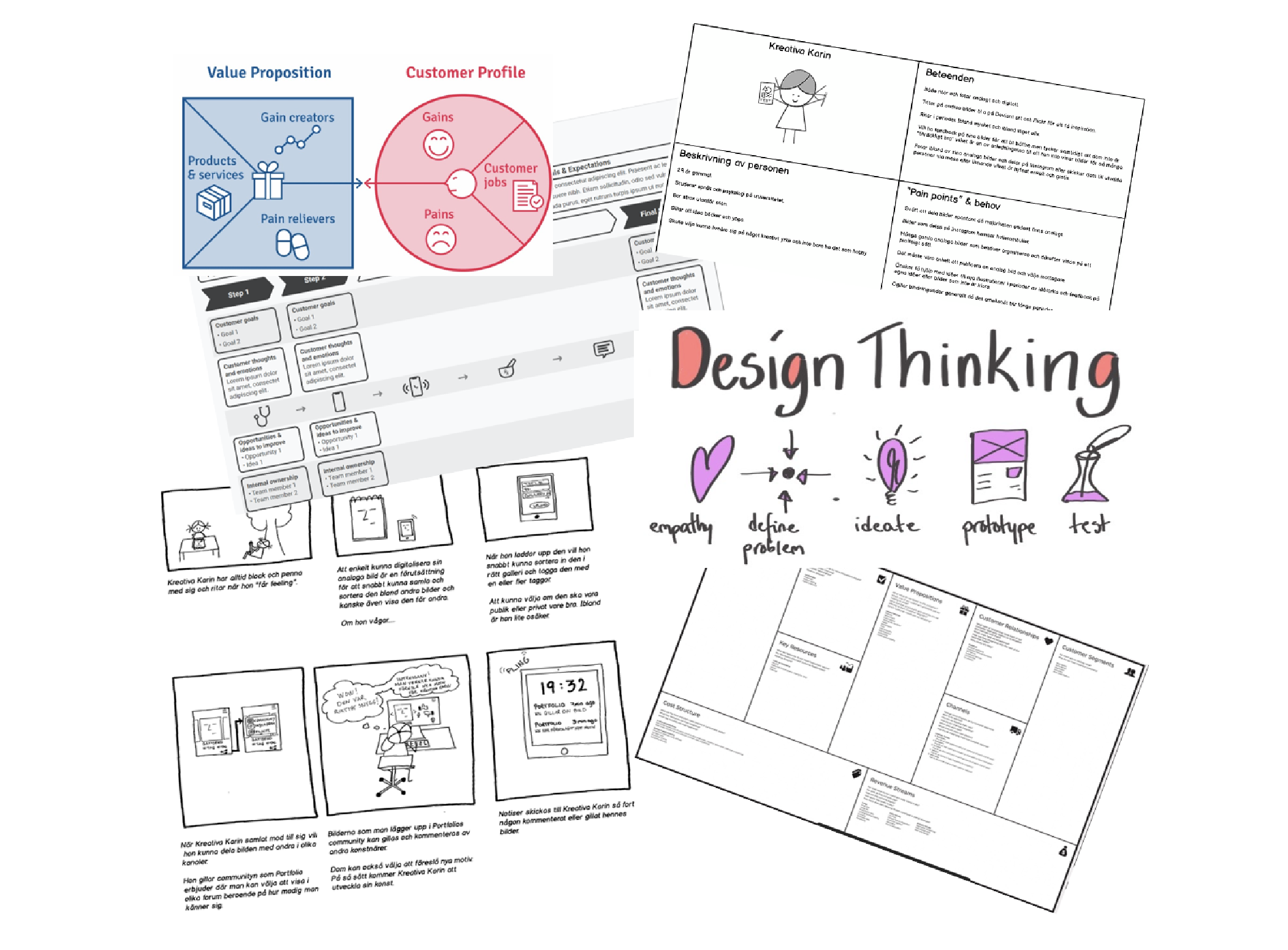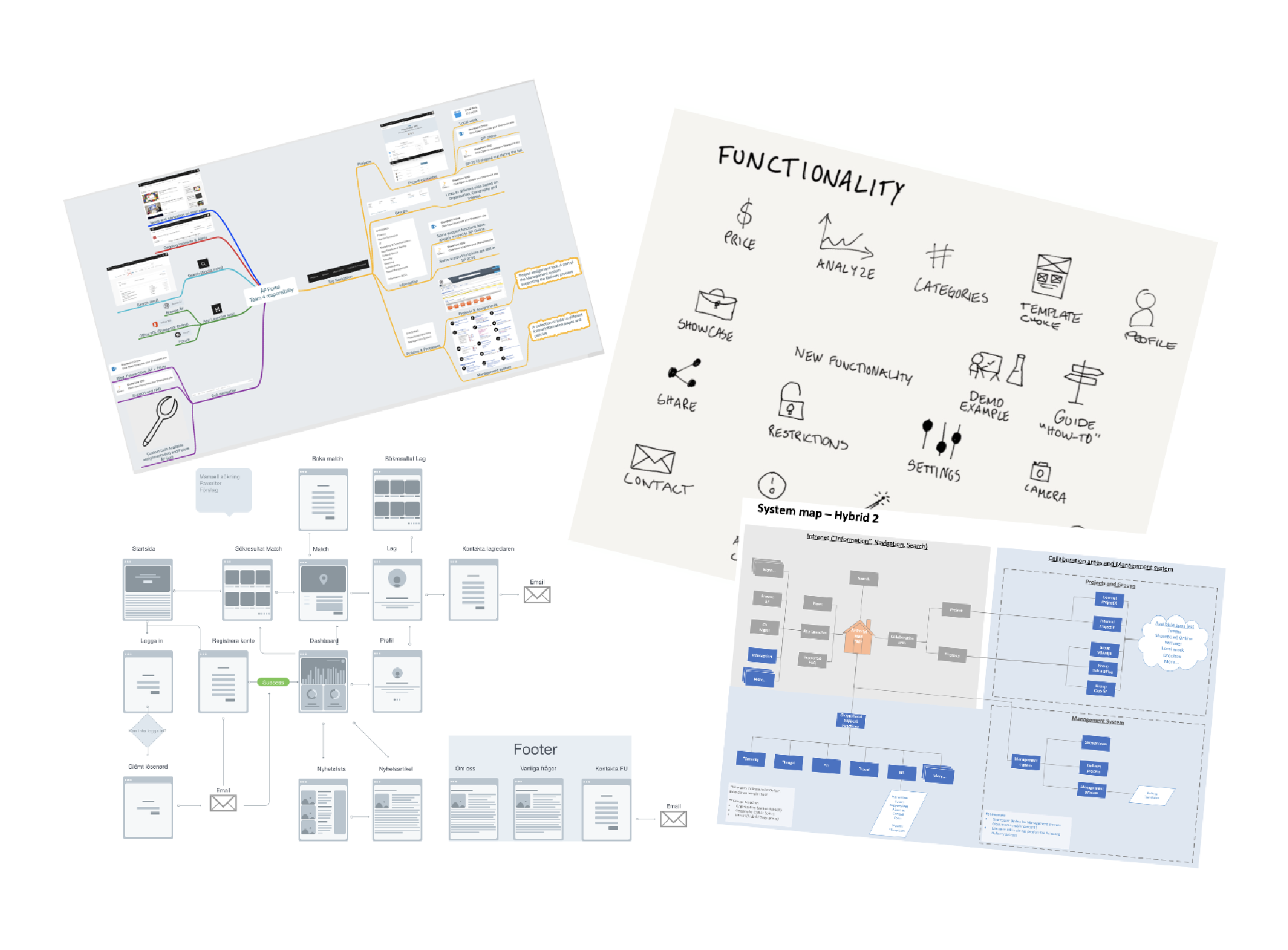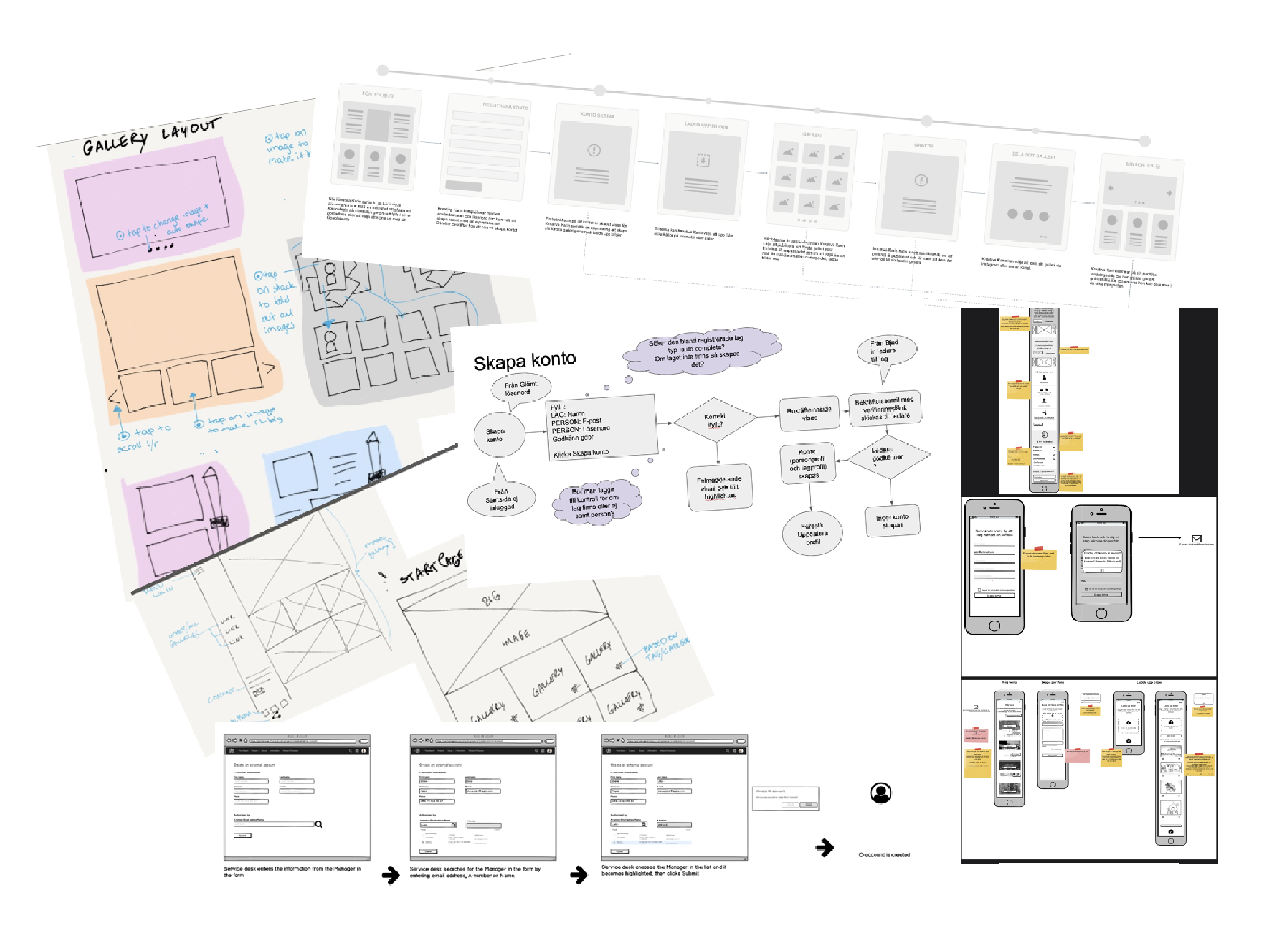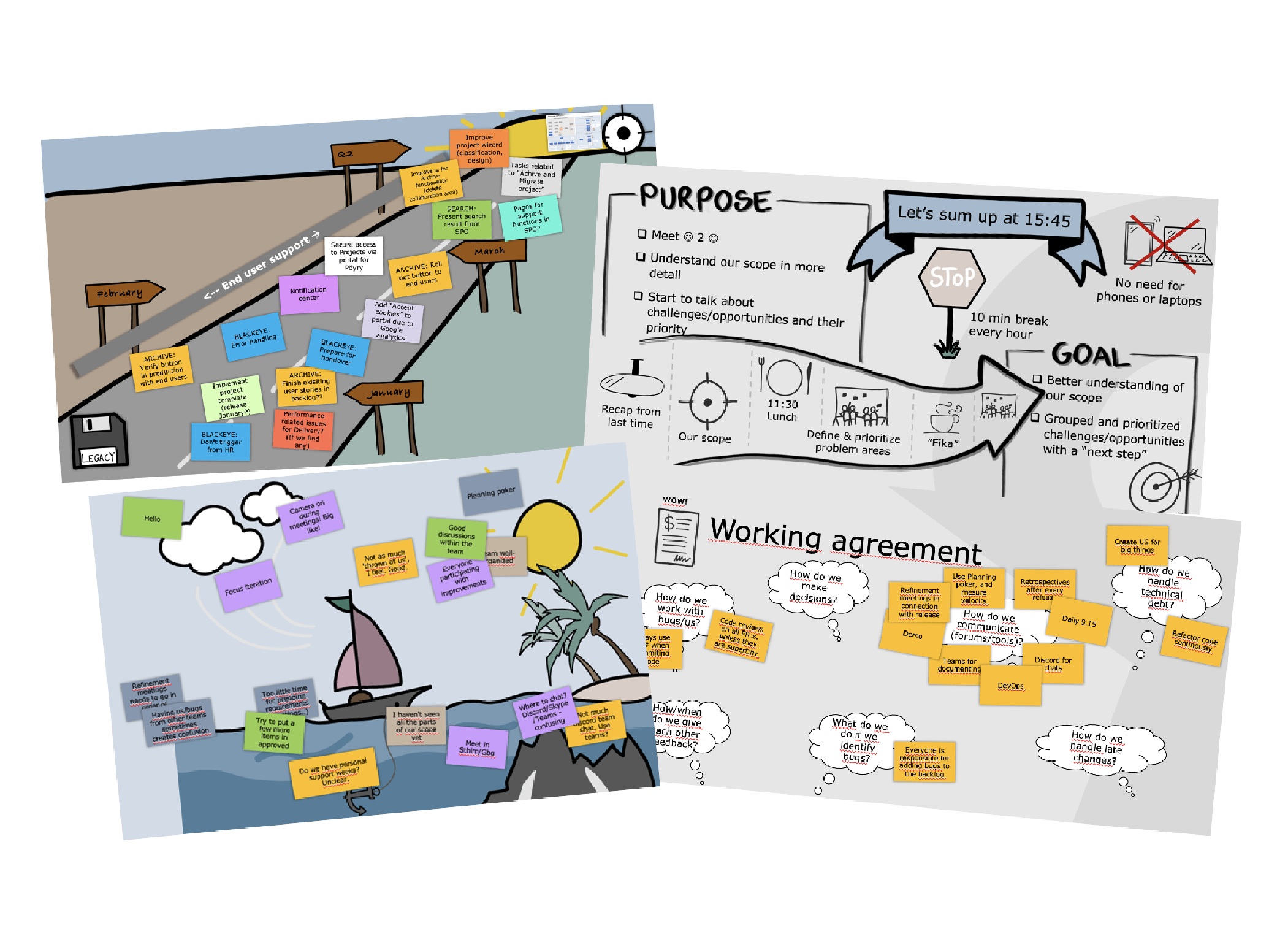How it begins
Clients bring me in when there’s a need to make sense of information, redesign ways of working, or define and implement sustainable solutions.

Empathize with your users
When trying to understand the customer or the the user on a more deeper level I like to create personas and storyboards. It’s often easier to put yourself in the shoes of that person if you get some context.
To fill a backlog with user stories to improve a product is one thing but to know that it’s the right things to do isn’t necessary the same thing. First you need to understand what problems to solve for who, then you can ideate solutions. It’s important that you put your bias aside and test your ideas and assumptions with early prototypes.
Understand who the user is and what problems to solve. Not every problem need a new system.
For mind maps or site maps I often use Miro, Mindnode or Visio.


Structure and analyze data
I often start by thinking in mindmaps or affinity diagrams. This is a way for me to visualize how things are related to each other. It can be about a company business and services, stakeholders, their systems, challenges etc.
It’s primarily a method to onboard myself when starting a new assignment but it’s really valuable when communicating with others as well.
Ideate and validate
It’s cheaper to “make misstakes” early in the process. That’s why I like to visualize user flows with rough paper sketches or wireframes. Often you can easily notice if the user flow isn’t logical or if the information model need to change.
I use pen and paper to create simple sketches to get that common view on how to interact with a solution. Paper and pen make it possible to invite others to collaborate on the sketches. Everyone have access to it compared to a prototyping application.
It’s not about pixel perfect prototypes. The purpose is to understand, ideate and communicate.
I create sketches and user flows in Miro, Figma, Adobe XD, Powerpoint or simply with pen and paper depending on the fidelity needed .
I make templates in Procreate, Illustrator or Adobe Fresco on my iPad and collaborate with the team in Powerpoint or similar.


Collaborate
Visualization is the best way of getting everyone on the same page, especially when working with different agile teams in a fast pace. To be successful you need that common view within the team and with the stakeholders. Everyone have to agree upon what is important to us, where are we going and how can we improve our way of working and/or our product.
Visualizing for example retrospectives, roadmaps, the teams “working agreement” and agendas are very powerful.
More about me
If you want to know more in detail where I've worked and what I've done, you can read more about me here on the site or go to my LinkedIn profile.